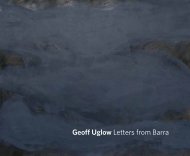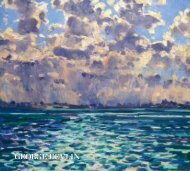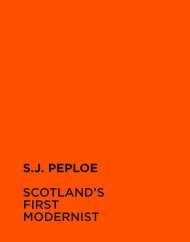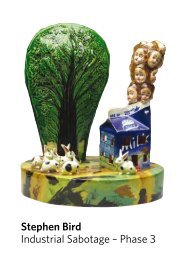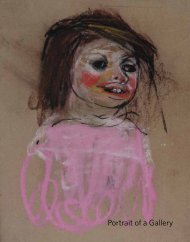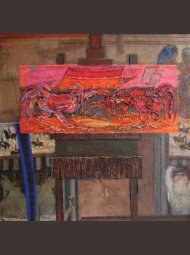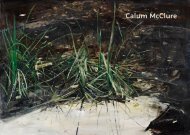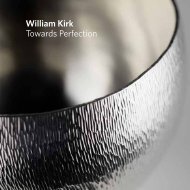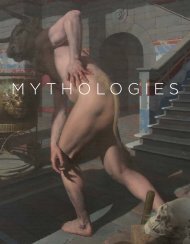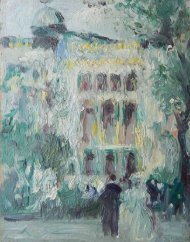Download a PDF of the exhibition catalogue - The Scottish Gallery
Download a PDF of the exhibition catalogue - The Scottish Gallery
Download a PDF of the exhibition catalogue - The Scottish Gallery
You also want an ePaper? Increase the reach of your titles
YUMPU automatically turns print PDFs into web optimized ePapers that Google loves.
It is tempting to posit that <strong>the</strong> primary reason why Blyth collected so many<br />
pictures by <strong>Scottish</strong> artists after <strong>the</strong> beginning <strong>of</strong> <strong>the</strong> Second World War was <strong>the</strong> very<br />
low prices. He liked a bargain and rarely had to spend more than thirty pounds on a<br />
picture by one <strong>of</strong> <strong>the</strong>se artists. <strong>The</strong> cost <strong>of</strong> all <strong>the</strong> pictures by <strong>the</strong> above-mentioned artists<br />
comes to less than he paid for Venture Fair in 1920 by William McTaggart. But this is not<br />
sufficient: his motivations were complex and varied. He certainly liked to support young<br />
<strong>Scottish</strong> painters (and even <strong>the</strong> galleries, in difficult times) and it is not unreasonable to<br />
describe his pattern <strong>of</strong> purchasing as compulsive. But he did not buy exclusively <strong>Scottish</strong><br />
works (nor limit <strong>the</strong> quantum <strong>of</strong> his spending) and would defend his favourite <strong>Scottish</strong><br />
painters only if he sensed an injustice in how <strong>the</strong>y might be treated by <strong>the</strong> critical and<br />
curatorial establishment.<br />
In 1939 Blyth became involved with an ambitious <strong>exhibition</strong> being organised<br />
by Stanley Cursiter, who was by <strong>the</strong>n Director <strong>of</strong> <strong>the</strong> National <strong>Gallery</strong> <strong>of</strong> Scotland.<br />
<strong>The</strong> ‘<strong>Scottish</strong> Art Exhibition’ took place in Burlington House, <strong>the</strong> home <strong>of</strong> <strong>the</strong> Royal<br />
Academy, and was not a critical success. <strong>The</strong> critics attacked <strong>the</strong> paintings <strong>of</strong> McTaggart<br />
especially, which was galling to Blyth since he had personally selected <strong>the</strong>m from his own<br />
collection. He recounted how:<br />
Whenever <strong>the</strong>se art critics in London know a thing comes from Scotland<br />
it is suspect at once. … We had this McTaggart room which I helped<br />
to choose and one critic wrote that we had done a poor service to<br />
McTaggart by showing a succession <strong>of</strong> seashore pictures round <strong>the</strong> room.<br />
Actually <strong>the</strong>re were more landscapes than seascapes for I had chosen<br />
<strong>the</strong>m myself. I very much doubt it, because <strong>the</strong> pictures were <strong>Scottish</strong>,<br />
<strong>the</strong> critic had never come to see <strong>the</strong>m. And <strong>the</strong>n ano<strong>the</strong>r had written<br />
‘McTaggart piles on <strong>the</strong> paint till he gets his effect!’ I feel that critic wrote<br />
without going to see <strong>the</strong> pictures. He would probably say ‘Oh it’s <strong>Scottish</strong><br />
which is <strong>of</strong> no interest to high-brow people like us.’<br />
Representative <strong>of</strong> <strong>the</strong> ‘more advanced and emphatic phase <strong>of</strong> recent painting in<br />
Scotland’, as <strong>the</strong> <strong>catalogue</strong> introduction defined it, were 21 S.J. Peploes, eight Cadells,<br />
five Hunters, along with two by Walter Grieve (1872–1937) and one each by William<br />
York Macgregor (1855–1923), T. Corsan Morton and William Crozier (1897–1930).<br />
<strong>The</strong> mixed critical reception may well have been a disappointment to <strong>the</strong> curators but<br />
cannot have been altoge<strong>the</strong>r a surprise; with <strong>the</strong> benefit <strong>of</strong> hindsight, <strong>the</strong> selection could<br />
have been balanced with <strong>the</strong> inclusion <strong>of</strong> William Gillies and William MacTaggart to<br />
represent <strong>the</strong> living.<br />
With <strong>the</strong> advent <strong>of</strong> war and <strong>the</strong> evacuation <strong>of</strong> so many pictures into safe storage<br />
from <strong>the</strong> National Galleries, Lillian Browse persuaded <strong>the</strong> Director Kenneth Clark to let<br />
her curate a series <strong>of</strong> shows <strong>of</strong> contemporary work, and from March to <strong>the</strong> end <strong>of</strong> August<br />
1940 she put on ‘British Painting Since Whistler’ which contained no <strong>Scottish</strong> art at all.<br />
As a result Blyth wrote some ‘extremely stormy’ letters to his young friend, demanding<br />
<strong>Scottish</strong> representation in <strong>the</strong> <strong>exhibition</strong>. A <strong>Scottish</strong> room was granted for 15 works, and<br />
pictures by Edwin Alexander, Robert Alexander (1840–1923), S.J. Peploe, McTaggart<br />
and Wingate were sent from <strong>the</strong> Blyth Collection. To <strong>the</strong>se works were added three<br />
from o<strong>the</strong>r sources, including an early Guthrie, Pastoral, Cockburnspath and Orchardson’s<br />
An Enigma.<br />
<strong>The</strong> reviews were again disappointing. D.S. MacColl, Wilson Steer’s biographer,<br />
wrote in a letter to <strong>The</strong> Times:<br />
19



